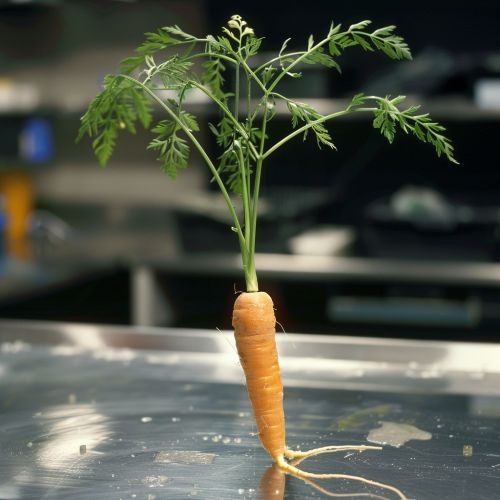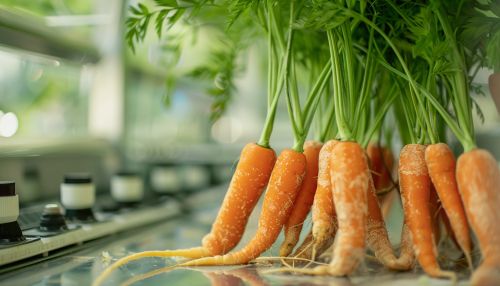Plant Tissue Culture
Introduction
Plant tissue culture is the practice of propagating plants under sterile conditions, often to produce clones of a plant. The techniques of plant tissue culture were first established by Gottlieb Haberlandt at the beginning of the 20th century. The method relies on the plant's ability to regenerate a whole plant from a single cell or group of cells, a phenomenon known as totipotency.
History
Haberlandt first introduced the concept of tissue culture and cell culture in 1902. His work paved the way for future developments in plant tissue culture. The first successful plant tissue culture was conducted by Frederic C. Steward in the mid-20th century, who was able to grow a complete carrot plant from a single carrot cell.


Principles
Plant tissue culture relies on the principle of totipotency, the ability of a cell to regenerate into a whole plant. This is achieved by providing the plant cells with a suitable culture medium that supplies the necessary nutrients and hormones. The culture medium is typically agar-based and includes a variety of hormones, vitamins, minerals, and sugars.
Techniques
There are several techniques used in plant tissue culture, including:
Callus Culture
In callus culture, plant cells are grown in a culture medium where they proliferate and form an unorganized mass of cells known as a callus. The callus can then be induced to form roots and shoots through the addition of specific hormones.
Organ Culture
In organ culture, a specific plant organ such as a leaf or root is cultured in a medium that promotes its growth. This technique is often used to study the development and physiology of plant organs.
Cell Suspension Culture
In cell suspension culture, plant cells are grown in a liquid medium. The cells proliferate and can be used for a variety of purposes, including the production of secondary metabolites and the study of cell physiology.
Protoplast Culture
In protoplast culture, the cell wall of the plant cell is removed to create a protoplast. The protoplast can then be cultured in a suitable medium, and can be used for genetic manipulation and the study of cell physiology.
Applications
Plant tissue culture has a wide range of applications in both research and commercial settings. These include:
Clonal Propagation
Plant tissue culture is often used for the clonal propagation of plants. This is particularly useful for the propagation of plants that do not produce seeds, or for the production of genetically identical plants.
Production of Secondary Metabolites
Plant tissue culture can be used for the production of secondary metabolites, such as alkaloids and flavonoids. These compounds have a wide range of uses, including as pharmaceuticals and food additives.
Genetic Engineering
Plant tissue culture is a crucial tool in genetic engineering. It allows for the introduction of new genes into a plant, and the subsequent regeneration of a whole plant from a genetically modified cell.
Conservation of Endangered Species
Plant tissue culture can be used for the conservation of endangered plant species. By propagating plants in vitro, it is possible to produce large numbers of plants in a relatively short period of time.
Challenges and Future Directions
Despite its many applications, plant tissue culture faces several challenges. These include the high cost of the process, the risk of contamination, and the difficulty in scaling up the process for commercial production. However, ongoing research in the field is aimed at addressing these challenges and improving the efficiency and applicability of the technique.
